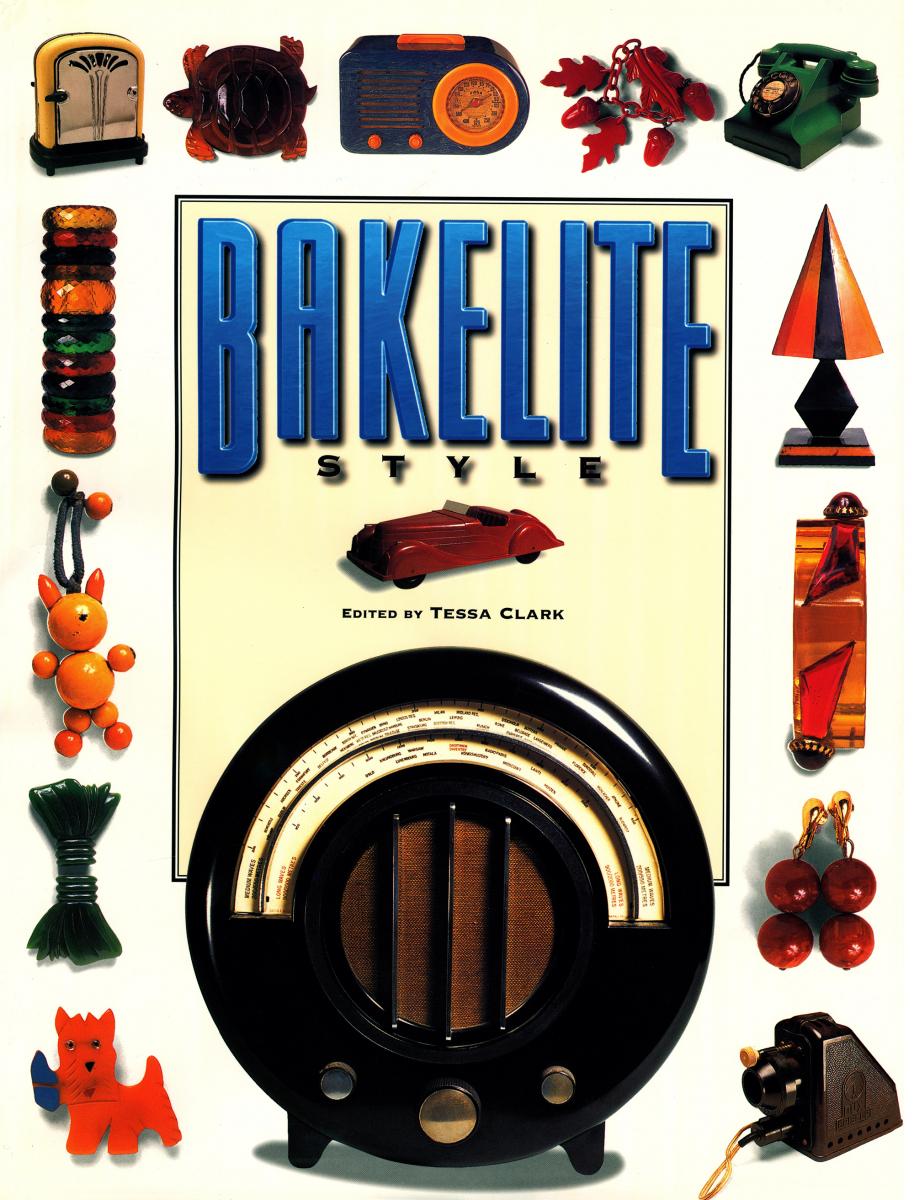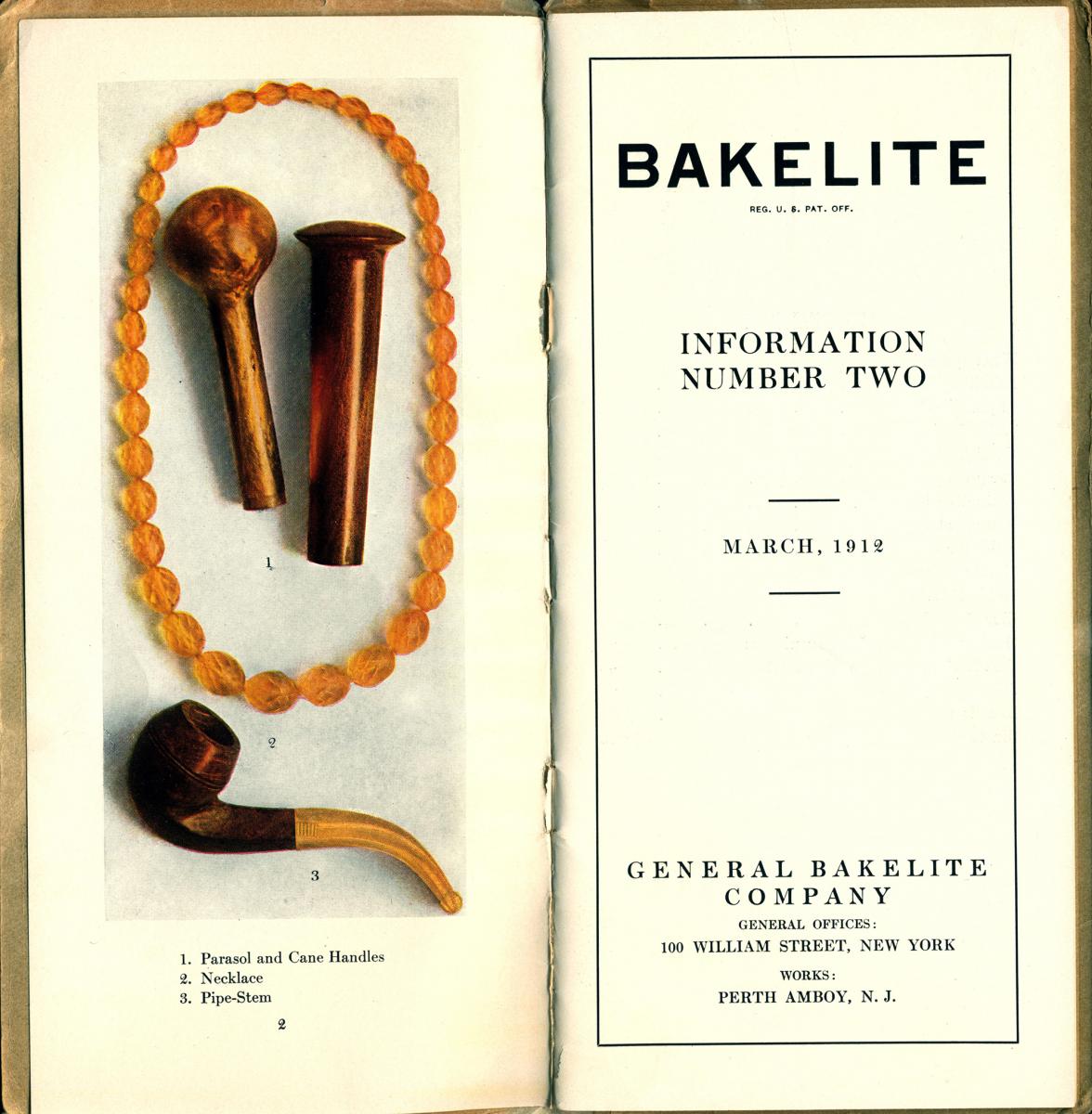One word…Plastics
I was re-shelving some library books the other day, when my eye was drawn to a book with brightly colored images on the cover. I pulled the book off the shelf and saw a black and green phone, an orange and blue radio, a stack of bracelets in various shades, and a chrome and cream toaster. What do these items all have in common?
They are all made of Bakelite, the world's first completely synthetic plastic. The cover of “Bakelite Style” shows examples of colorful objects made of Bakelite that brightened everyday life in the first half of the 20th century. Today these vintage treasures are prized by antique dealers and collectors.

Bakelite style / edited by Tessa Clark. Edison, N.J. : Chartwell Books, ©1997.
Celluloids were being produced as early as 1856. Celluloid was created from modified natural materials, nitrocellulose and camphor. It was first widely used as an ivory replacement, to make items such as dressing table sets, dolls, picture frames, buttons, buckles, and kitchen items.
The problem with Celluloid, aside from being difficult and expensive to produce, was that it was very flammable.
The beginning of the modern plastics era came in 1907, when Belgian-American chemist Leo Baekeland produced the first moldable synthetic polymer (oxybenzylmethylenglycolanhydride,) which he named Bakelite. Bakelite is a resin formed from equal parts of formaldehyde and phenol, in the presence of a base, by the application of heat.
Baekeland and other scientists experimented with soluble resins, hoping to capitalize on shortages of naturally occurring shellac (made from beetle shells.) Chemists had begun to recognize that many of the natural resins and fibers useful for coatings were polymers, and they began to search for combinations of materials that would react to form synthetic polymers.
Unlike Celluloid, Bakelite was a thermosetting resin that, became permanently solid when heated. Because it was impervious to heat, acids, or caustic substances, Bakelite was particularly suitable for the emerging electrical and automobile industries. It was used for non-conducting parts of radios and other electrical devices, such as bases and sockets for light bulbs, telephone casings, and other insulators.
It could be molded into a wide variety of shapes, creating a wide variety of consumer products such as billiard balls, jewelry, pot handles, telephones, toasters, electric plugs, and airplane instrument knobs.

Bakelite : information number two. General Bakelite Co., 1912.
Baekeland's first patent in the field was granted in 1906. He took out more than 400 patents related to the manufacture and applications of Bakelite.
In the 1930’s, with the development of Modernism, Molded Bakelite found a place in almost every area of modern life. Plastics became a source of relatively inexpensive consumer goods. The Bakelite Corporation adopted as its logo the mathematical symbol for infinity and the slogan, "The Material of a Thousand Uses."

A simplified guide to Bakelite plastics / Bakelite Corporation, c. 1941.
Leo Baekeland’s work paved the way for now-familiar synthetic plastics such as polystyrene in 1929, polyester in 1930, polyvinylchloride (PVC) and polythene in 1933, nylon in 1935, and even Tupperware in 1946.
In 1939 Baekeland retired, and sold his company to Union Carbide and Carbon Corporation. Five years later, in 1944, the “Father of Plastics” died, but his products live on in our homes, or on eBay, making our world a little more colorful.
Linda Gross is a reference librarian at Hagley Museum and Library.
